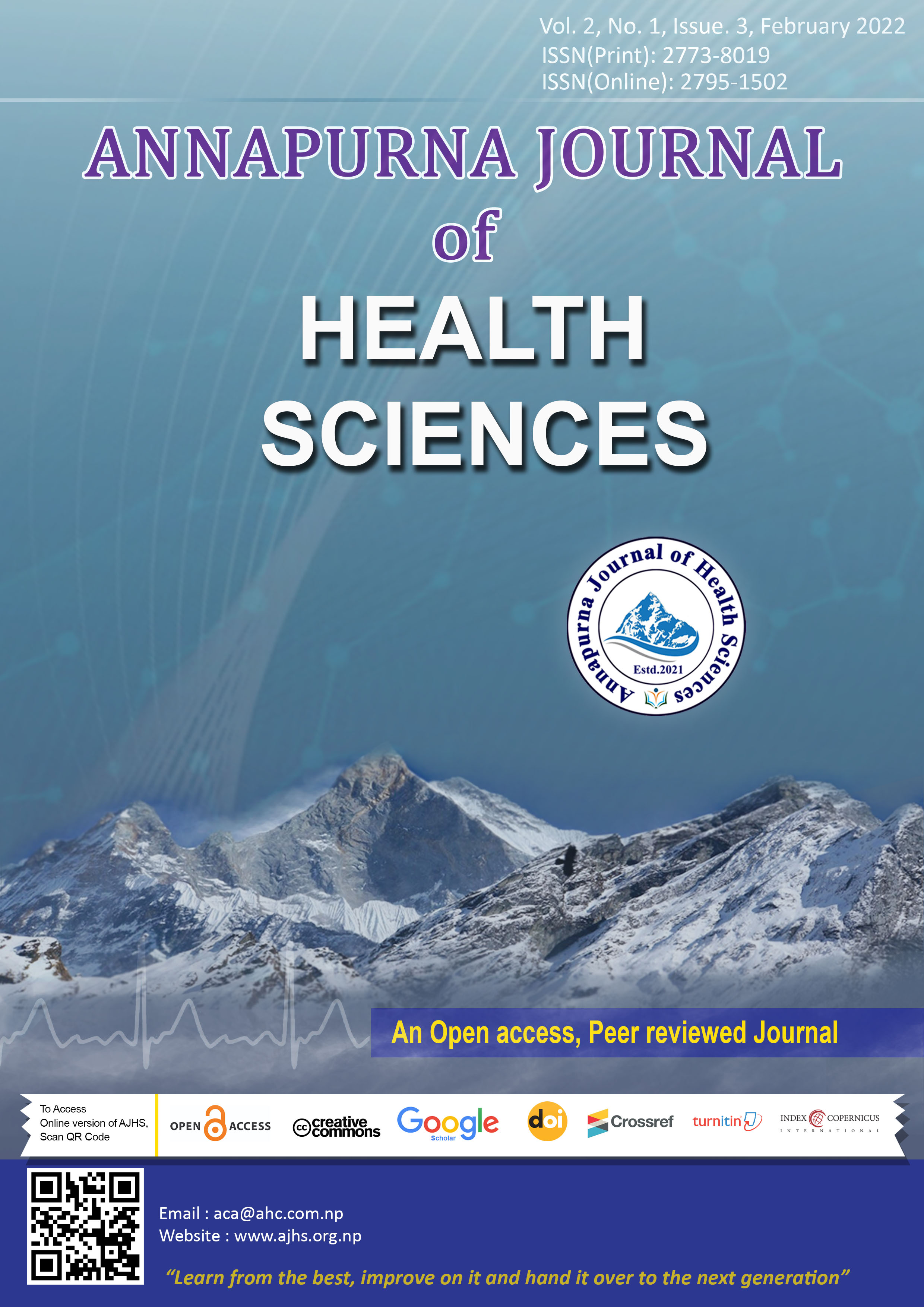Azathioprine in the Treatment of Multiple Sclerosis: A Single Center Experience from Nepal
Keywords:
Azathioprine, Interferon, Multiple SclerosisAbstract
Introduction: Azathioprine is used as an off - label drug for the treatment of multiple
sclerosis. It is one of the oldest and most widely used immunosuppressants that
targets T and B lymphocytes and thus reduces the relapse and slows down the
disease progression with the almost same efficacy as the other disease modifying
drugs for multiple sclerosis. But due to its side effect profile it isn’t used as a
standard choice of treatment. However, its cost effectiveness and oral route of
administration makes it a drug of choice in a low socioeconomic country. This
paper highlights the diagnosis of Multiple Sclerosis based on McDonald’s criteria
and treatment with Azathioprine.
Methods: It is a retrospective analysis was conducted among 32 patients suffering
from Multiple sclerosis and treated with Azathioprine at tertiary neurological
institue.Patients outcome was also documented reaching them individually.
Results: Among 19 patients all were female with highest prevalence among age
group of 30-39 years old. 60% had relapsing remitting Multiple sclerosis, 45% of
the patients present with ocular symptoms followed by 31% patients with lower
limb weakness and spasticity. 30% did not develop any relapse, 15.8% patients
developed one episode of relapse, 21.1% patients relapsed twice while 21.1%
patients relapsed thrice during the study period. 85% patients showed signs of
improvements with Azathioprine therapy in terms of decreased neurological
residual deficits and less complication.
Conclusion: Azathioprine shows improvement, slows the rate of relapse with
minimal evidence of side effects and no evidence of malignancy in patients with
multiple sclerosis.
Downloads
Downloads
Published
How to Cite
Issue
Section
License

This work is licensed under a Creative Commons Attribution 4.0 International License.
This license allows reusers to distribute, remix, adapt, and build upon the material in any medium or format, so long as attribution is given to the creator. The license allows for commercial use.




